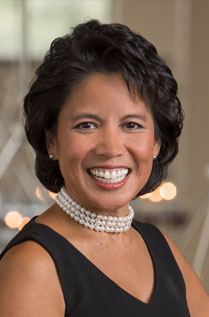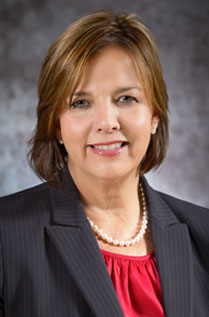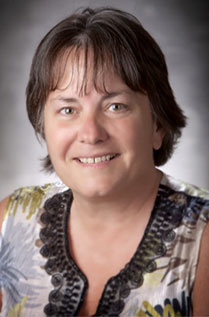By Kasey Fuqua
Health data can do more than demonstrate quality indicators or track reimbursement rates; it can provide a road map to improving community health.
As part of Affordable Care Act requirements, all non-profit or tax-exempt hospitals must complete community health needs assessments (CHNAs) every three years. These assessments use community member input to identify health needs, barriers to care and health disparities.

“From a regional standpoint in Hampton Roads, there are common themes that seem to emerge from all the community health needs assessments,” says Dr. Cynthia Romero, director of the M. Foscue Brock Institute for Community and Global Health at Eastern Virginia Medical School. “These are very consistent, so each community has to be addressing them in order to improve health.”
According to CHNA results, common health challenges across Hampton Roads include:
• Cancer
• Cardiovascular disease, including heart attacks and stroke
• Diabetes
• Lack of access to primary care or specialty care
• Lack of access to outpatient or inpatient mental health care
• Lack of transportation to medical facilities and grocery stores
• Obesity in adults and children
• Opioid addiction and other substance use disorders
• Tobacco use
While many of these factors, such as obesity, are receiving national attention, others are only obvious after feedback from the community.

“It is just so important for organizations to take the feedback and opinions of those within our service market to help us form a strategy to make sure that we are meeting a community need,” says Nancy Littlefield, Chief Nursing Officer and Senior Vice President at Riverside Health System. “We could never deliver health care effectively if we didn’t hear our community’s voice and just assumed we knew.”
The Changing Face of Community Health Data
While many city health departments and hospitals completed their own surveys in the past, CHNAs offer health systems an opportunity to work together to collect comprehensive data. Many health systems use CHNA data to collaborate on community health initiatives.
“Especially this last 2016 report, we really looked at what are some common services areas that we share with Sentara and Bon Secours,” says Littlefield. “In the service markets we overlapped, we actually worked together to form projects.”
These joint efforts allow community health officials to seek out more cost-effective ways of delivering care and preventing health problems. But preventing costly chronic conditions takes a community-wide effort to make health a priority.
Dr. Romero says the national conversation about health care reform has been shifting to focus not just on how health care is delivered, but on how social factors such as income and education play a role in health outcomes.
According to the Centers for Disease Control and Prevention, socioeconomic factors and health behaviors play a much larger role in health than clinical care. Stakeholders throughout the community must work together to influence these factors and make it easier for residents to improve behaviors.
“Everyone has a role to play to reduce disparities and help people stay healthy and well,’ says Dr. Romero. “Everyone should be accountable in their own way to contribute to the health of their community.”
Health data also helps community officials focus spending where it can do the most good.
“The need to be efficient and make sure resources are deployed where they are needed is so important today with reimbursement models changing,” says Littlefield.
Data-Driven Programming to Improve Community Health
As a result of CHNAs, hospital systems across Hampton Roads have instituted new, targeted programs to benefit community health. Hospitals are required to collect information about the participation and efficacy of these programs to demonstrate to the IRS how they have benefited the community.
Many hospitals and practice groups, including Riverside and TPMG, are improving access to care through extended hours, Saturday hours and after-hours clinics.
“Access is always important,” says Littlefield. “In many families in our community, both mom and dad work, so it’s important that we provide afterhours care in physician practices.”
EVMS works with hospitals and community organizations to offer many community health initiatives. Working with the Consortium for Infant and Child Health (CINCH), EVMS community health experts, CHKD team members and others focus on efforts such as:
• Asthma Action Plan to manage childhood asthma
• Reducing childhood obesity
• #757SmokeFreeRide to lower children’s exposure to secondhand smoke
• A strategic plan with March of Dimes to improve childbirth outcomes
• Reducing tobacco usage and vaping in teens
Riverside Health System has also initiated new programs, such as one in the Williamsburg market, to create a heart safe community. Collaborating with the American Heart Association, emergency medical services and others, they can now use a smartphone app to locate AEDs and trained users throughout the community.
On the Peninsula, the Peninsula Health Collaborative, with representatives from Riverside, Bon Secours, Sentara, TPMG and more, work together on issues such as food insecurity in patients with chronic diseases.
TPMG is also teaming up with Bon Secours Mary Immaculate Hospital to care for patients with congestive heart failure, reducing their readmissions and ER visits based on quality data.

Dr. Jennifer Sharp-Warthan, Family Medicine physician and Chief Medical Officer at TPMG, says that improving the speed that data is shared between hospitals, insurance companies and physicians can also greatly improve health.
“We try to contact patients within 48 hours of a patient being sent home to make sure they have their prescriptions and that they can be seen by the primary care provider or specialist,” says Dr. Sharp-Warthan. “We also receive direct feeds from hospitals of people who were discharged from the hospital or who went to the ER the day before so we can follow up with them.”
This quick follow-up from TPMG physicians helps patients avoid bouncing between acute care facilities, giving them high quality, cost-effective care on an outpatient basis. This program also highlights how physicians can use data to change how they deliver care.
The Vital Role of Physicians in CHNAs
Because of their everyday interactions with patients, physicians have valuable insight into how community health could be improved.
“The input of everyone is critical,” says Dr. Romero. “If physicians are asked to participate in a survey that looks at health issues within their community, we encourage everyone to participate.”
Dr. Romero says physicians should also strive to educate themselves and their staff about health disparities, cultural concerns and other factors that could lead to gaps in care. She encourages physicians to talk about approaches to community health within their practice.
To help guide conversations and practice policies, physicians can easily access community health data. They can even begin with quality data collected in their own practices for Medicare or Medicaid.
“Physicians can glean a lot of information by simply reviewing those reports in a proactive fashion,” says Dr. Romero. “They can see potentially where certain workflow or communication improvement could help address health disparities and quality of care.”
Physicians can also review community health needs assessments and other health data through sources such as:
• City health departments
• Health system websites
• County health rankings from the Robert Wood Johnson Foundation
• CDC health reports
• Virginia Department of Health resources
Though physicians are often overworked, taking time to review these resources can help them lead efforts to transform community health.
The Future of CHNAs
Dr. Romero sees the role of CHNAs continuing to expand among communities in the future, though physicians will likely remain leaders of public health movements.
“I see CHNAs becoming ongoing priorities for all organizations that are committed to improving the health of communities they serve,” says Dr. Romero. “CHNAs will help us recognize that health really should be considered in all policies in hospitals, at work or at home, because of the nature of health and how it is impacted by socioeconomic factors.”
In data-driven communities of the future, CHNAs will impact more than health delivery. They may lead to sidewalks in neighborhoods, farmer’s markets at elementary schools, increased public transportation and other efforts geared toward creating vibrant communities centered around health.

